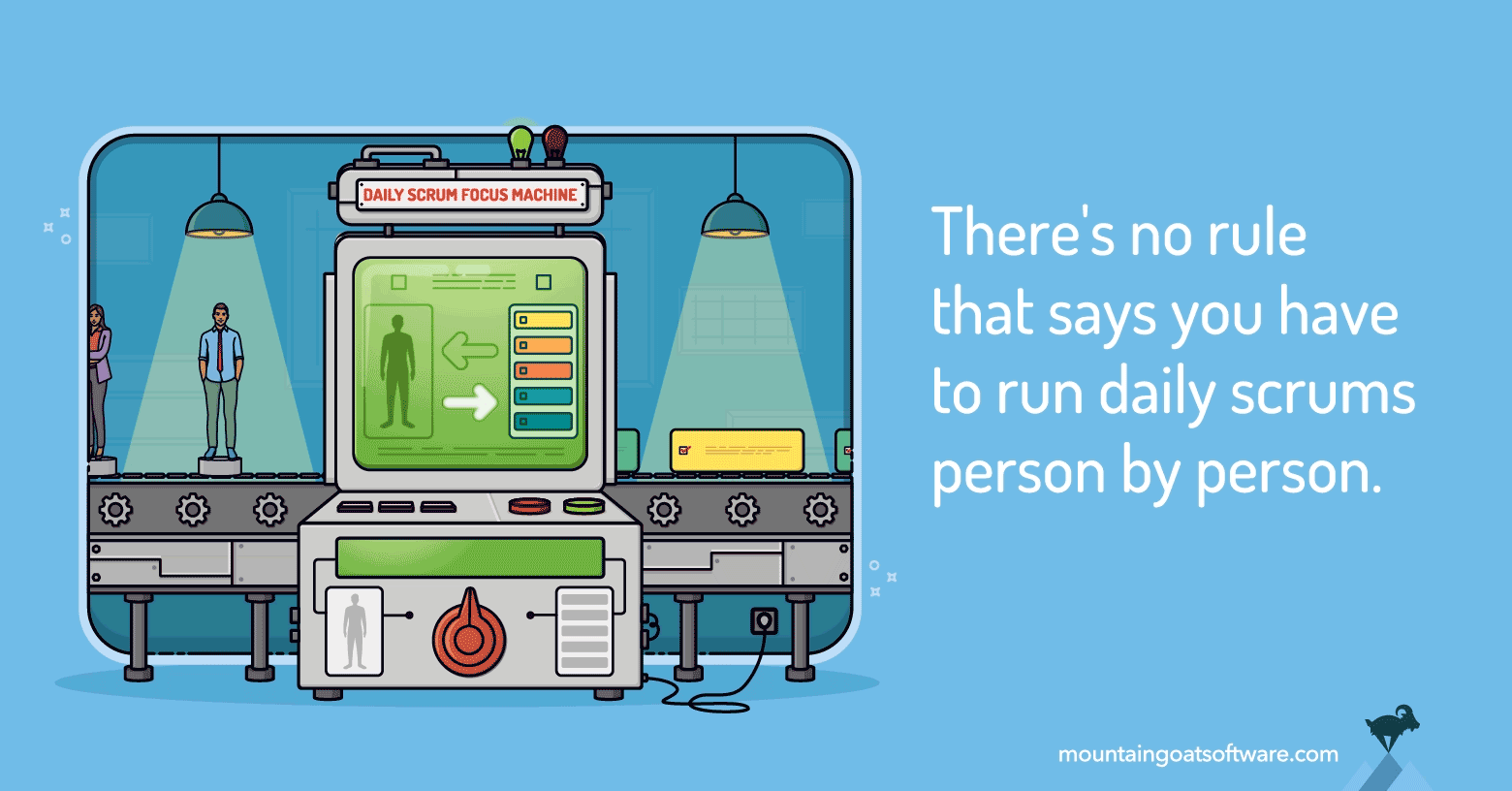If your daily scrum feels more like a status meeting than a synchronization opportunity, you're probably doing your daily scrums wrong. And that might be one reason why team members are asking questions like, do we really have to do daily scrums every day?
If your daily scrum meeting is currently about asking each team member to give an update on their progress, plans, and problems (What did you do yesterday, what will you do today, what impediments do you have), there is a better way.
The method I share in the video below (and the transcript that follows) helps team members be more engaged, learn more about each other's work, and notice more easily if a product backlog item is going off the rails and needs attention.
The Problem with How Most Teams Conduct Daily Scrums
Most daily scrums are conducted person by person, often still with the three traditional, but no longer required questions of the daily scrum.
- What they did yesterday
- What they'll do today,
- What, if anything, is in their way.
After each person gives their update, the next person gives their full update.
This is a very natural way to do a meeting. One by one, each person says what they have to say.
One problem with this approach is that each person speaks only once. After I give my update, I'm done. I may not say anything else the entire rest of the meeting. In fact, a rule of no problem-solving during the daily scrum encourages me to remain silent after giving my update.
There's no rule that says you have to run daily scrums person by person.
Try PBI by PBI Instead
For most teams, I found a better approach is to go backlog item by backlog item.
The Scrum Master, or whoever is facilitating the meeting, calls out a first product backlog item and asks, who worked on this item yesterday?
Anyone who did states what they did yesterday.
The facilitator then says, "Great, and who will work on it today?"
Anyone who plans to work on that item today shares what they plan to accomplish.
Finally, the Scrum Master or facilitator asks, and is anything holding anyone back on this item?
Team members answer, and then the facilitator repeats this process on the next product backlog item.
Benefits of an Item-by-Item Approach
I want to highlight a couple of benefits of a PBI-by-PBI approach.
First, team members are likely to talk more than once.
Suppose I'm heavily involved in one product backlog item, but also doing a few little things on a second item.
I will talk twice during the meeting as each item is discussed.
In the traditional person-by-person approach, I would give the same update, but I do it all at once.
Second, it's much easier to understand which backlog items are being worked on.
Imagine a team that has brought 10 items into their sprint. The team should be working on perhaps two to four of those at any time.
If you run the meeting item by item, and team members give updates on all 10 items in the sprint, that's a problem. It's too much work in process.
Doing the meeting item by item makes this much more obvious than if you do the meeting person by person.
Third, it's easier to gauge what work will be completed in the sprint.
If three or four people each give an update on a given item, that item will probably be finished in the sprint, or at least the team is trying to finish it.
On the other hand, if no one mentions a particular item and you're nearing the end of the sprint, you can start to think that one item won't be finished.
Fourth, the number of people who talk about any item indicates the degree to which team members are collaborating.
If only one team member comments on each item, there isn't a lot of collaboration occurring.
This can help the Scrum Master notice a problem sooner.
Daily Scrums: Efficient Isn’t Always Effective
I think doing daily scrum meetings person by person is a legacy of the old status meetings many team members participated in during their pre-agile days. In those meetings, a manager would ask each person to provide an update.
And so when teams move to agile, they start by doing daily scrums the same way. It's a natural way to do the meeting and it can be very efficient. Each person can provide their complete update all at once.
For some teams, going person by person may be best. But in my experience, a lot of teams benefit from going item by item.
How to Make Daily Scrums More Effective
I suggest mixing it up. Do this sprint’s daily scrums item by item, then next sprint do it person by person. See how it goes.
You might find one approach is best for you.
Or you might find it's good to keep daily Scrums fresh by changing the approach now and then.
Last update: July 15th, 2024









